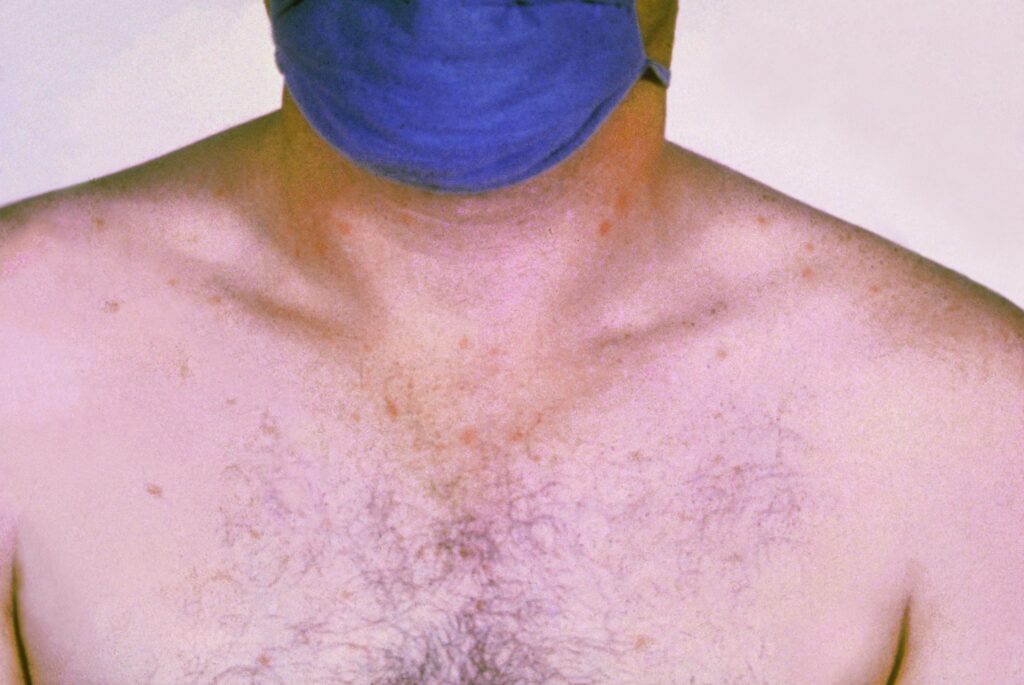Paratyphoid fever is a systemic bacterial infection caused by Salmonella enterica serovars Paratyphi A, Paratyphi B, and Paratyphi C. It is part of the enteric fever complex, closely related to typhoid fever, but is generally considered less severe. Paratyphoid fever remains a significant public health concern in many low- and middle-income countries, particularly where sanitation and access to clean water are inadequate.

Causes and Transmission of Paratyphoid Fever
Causative Agents
Paratyphoid fever is caused by Salmonella Paratyphi species:
- S. Paratyphi A – Most common globally
- S. Paratyphi B – Less prevalent
- S. Paratyphi C – Rare, often localized in specific regions
These bacteria are human-restricted pathogens, transmitted through the fecal-oral route.
Transmission Mechanism
Infection typically occurs after ingestion of food or water contaminated with feces or urine from an infected individual.
Risk Factors and Vulnerable Populations
- Lack of access to clean water
- Poor sanitation infrastructure
- Consumption of street food or untreated water
- Travel to endemic regions (South Asia, Africa, parts of Latin America)
- Close contact with an infected carrier
Children and immunocompromised individuals are particularly susceptible.
Paratyphoid Fever Symptoms and Clinical Presentation
The incubation period ranges from 6 to 30 days. Symptoms are often indistinguishable from those of typhoid fever but tend to be milder.
Common Symptoms
- Persistent high-grade fever
- Fatigue and malaise
- Abdominal discomfort or pain
- Diarrhea or constipation
- Anorexia
- Headache
- Rose spots (faint, pink skin rashes on the trunk)
- Hepatosplenomegaly (enlarged liver and spleen)
In severe cases, complications such as intestinal hemorrhage or perforation may arise.
Diagnosis of Paratyphoid Fever
Early and accurate diagnosis is essential to reduce morbidity and prevent transmission.
Diagnostic Methods
| Test | Description | Usefulness |
|---|---|---|
| Blood Culture | Most reliable in early stages | Gold standard |
| Stool Culture | Useful later in the disease course | Indicates shedding |
| Urine Culture | May detect pathogens in excretion | Limited sensitivity |
| Widal Test | Serologic test detecting antibodies | Low specificity, not recommended for standalone diagnosis |
| PCR (Polymerase Chain Reaction) | Rapid and highly sensitive | Emerging, limited availability in endemic regions |
Blood culture remains the most definitive diagnostic method, especially within the first week of illness.
Treatment and Management of Paratyphoid Fever
Prompt antimicrobial therapy shortens illness duration, reduces complications, and limits transmission.
First-Line Antibiotics
- Azithromycin – Preferred in areas with fluoroquinolone resistance
- Ceftriaxone – For hospitalized patients or severe cases
- Ciprofloxacin – Effective but resistance is increasingly common
Treatment Duration
- Uncomplicated cases: 7–10 days
- Complicated or relapsing cases: 10–14 days
Supportive Therapy
- Adequate hydration
- Nutritional support
- Antipyretics for fever control
Antibiotic resistance is an emerging concern; antimicrobial susceptibility testing is recommended to guide therapy.
Complications Associated With Paratyphoid Fever
Though typically less severe than typhoid, complications can still occur, particularly if left untreated:
- Intestinal perforation
- Septicemia
- Hepatitis
- Endocarditis
- Relapse (in 5–10% of cases)
Early intervention minimizes the risk of life-threatening outcomes.
Prevention of Paratyphoid Fever
Hygiene and Sanitation
- Ensure access to safe drinking water
- Proper hand hygiene, especially after using the toilet and before meals
- Safe food handling and consumption practices
- Avoid raw vegetables or fruits washed with unsafe water in endemic areas
Vaccination
Currently, there is no licensed vaccine exclusively targeting Salmonella Paratyphi. Existing typhoid vaccines (Ty21a and Vi polysaccharide) offer limited or no protection against paratyphoid fever.
Research is ongoing for bivalent typhoid-paratyphoid vaccines, which may provide a future solution.
Typhoid vs. Paratyphoid: Key Differences
| Feature | Typhoid Fever (S. Typhi) | Paratyphoid Fever (S. Paratyphi) |
|---|---|---|
| Severity | Generally more severe | Milder |
| Incubation | 7–14 days | 6–30 days |
| Vaccine Available | Yes | No |
| Carrier State | Common | Less common |
| Geographic Distribution | Global | Concentrated in Asia and Africa |
Global Burden and Epidemiology
According to global health data:
- Paratyphoid fever accounts for approximately 25% of all enteric fever cases.
- S. Paratyphi A is the dominant strain in South and Southeast Asia.
- Co-endemicity with typhoid fever is common in India, Pakistan, Nepal, Bangladesh, and parts of Africa.
Estimates suggest over 5 million cases of paratyphoid fever occur globally each year, with the majority in children and adolescents.
Frequently Asked Questions:
How is paratyphoid fever different from typhoid?
While both are caused by Salmonella species, paratyphoid is usually milder and caused by different serovars (S. Paratyphi A, B, or C).
Can paratyphoid fever be fatal?
If untreated, it can lead to severe complications and death, although it is generally less lethal than typhoid.
Is paratyphoid contagious?
Yes. It spreads via the fecal-oral route, especially in settings with poor sanitation.
How long does recovery take?
With proper treatment, most patients recover within 10–14 days.
Can one get paratyphoid fever more than once?
Yes. Immunity after infection is not lifelong, and reinfection is possible.
Paratyphoid fever remains a substantial health challenge in regions with inadequate sanitation and limited access to clean water. As antibiotic resistance grows and vaccination remains unavailable, prevention through hygiene, early detection, and proper treatment is paramount. Awareness and sustained public health initiatives are crucial in reducing the burden of this preventable disease.